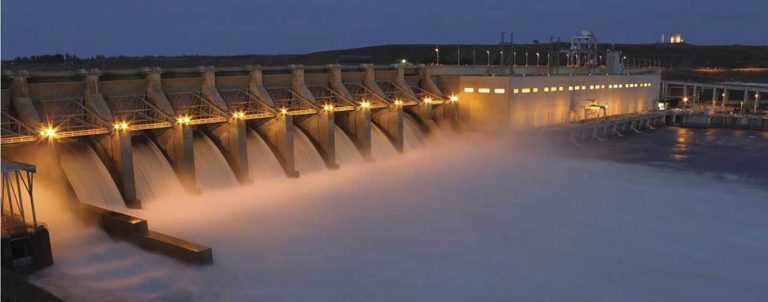Sub-Saharan Africa has an infrastructure gap of more than $40 billion. As noted by U.S. President Barack Obama in the announcement of his Power Africa project recently, this gap is most notable in the power sector. The power sector accounts for nearly 60 percent of the spending deficit, and more than half of sub-Saharan Africa’s population is without access to energy. For potential financiers who’ve been waiting anxiously for new projects, Power Africa is just the tip of the iceberg in addressing the power needs of the continent. This is why renewable energy sources like hydropower i.e. energy harnessed from water have become more important than ever.
Read more about Obama’s Power Africa initiative

The Current Situation
Power access in sub-Saharan Africa is, to say the least, puzzling. About 65,000 MW currently serves 700 to 800 million sub-Saharan Africans. Of that number, 40,000 MW serves the South African population of about 50 million. In Nigeria, an estimated 7,000 MW to 9,000 MW is produced off the grid by generators, compared to the 3,000 MW on the grid. Such figures leave some Nigerian locals tossing around the over-used phrase of “This is Africa.”
Liberalization (or privatization) remains the buzz word to solving the issue in many African finance circles, but deregulation has not produced the same effects as seen in telecommunications. Large private equity deals in telecom, including the Nigerian Helios Investment Partners deal, demonstrate the economic and financial attractiveness and boost that liberalization can bring to a market. Yet broad-based reform, while being discussed as a more serious option these days, has never been fully realized. Some success has been seen in Kenya and Uganda – a country that started liberalization back in the 1970s before the word ‘privatization’ became popular. Still, investors talk about how the process is taxing at times, not for financing reasons but because of the challenges one faces when trying to align political and financial interests and processes.
Is Hydropower The Answer?
A renewed interest in Africa’s hydropower sector could be what will improve past attempts at privatization. However a recent spat – and near political debacle – between Ethiopia and Egypt over the Grand Ethiopian Renaissance Dam also underscores both the potential and contentiousness of such initiatives. The Ethiopian government intends to fund the entire project, which could surpass $5 billion. The Egyptian government has lodged protests that Ethiopia’s use of the Blue Nile River for the dam violates a 1929 pact that entitles Egypt to 55.5 billion cubic meters per year of the Nile’s 84 to 85 billion cubic meters. In early June, Egyptian President Mohammad Morsi was unknowingly caught on tape with Egyptian politicians discussing potential methods to destroy the dam. The Ethiopians have stuck to their guns – unsurprisingly – since most hydropower projects when executed properly are proving to be highly lucrative, in spite of the associated politics.

Greater cross-border relations have also contributed to this positive outlook as seen throughout the continent, particularly in the Southern African Development Community (SADC) region. The governments of Lesotho and South Africa have worked cooperatively over the Lesotho Highlands Project, while Zimbabwe and Zambia have struck a similar deal with the Batoka Gore Hydropower Project. Yet an estimated 85 to 90 percent of Africa’s hydropower potential still remains untapped. Private investors have warmed up to the idea of Independent Power Projects (IPPs). Many sub-Saharan governments, sensing the opportunity, have changed the legal and regulatory environment to better enable IPPs. Countries have also adjusted tariffs to further the attractiveness of hydropower and other renewables. The Ethiopian government recently raised its cost per kWh to just under $0.07. Hydropower requires around $0.08 – $0.11 per kWh to jumpstart private sector investment. Industry players already pay north of $0.20 per kWh in certain markets, including Kenya and Tanzania. Ethiopia could potentially export energy to Sudan in a similar range.
The climate change advocates have also been leaning heavily on the power sector to make reforms. Financing coal and gas projects can be quite attractive, according to a policy report by the African Development Bank, yet even the increasing finds of oil and gas are not sufficient to meet Africa’s power demands. Fuel and carbon taxes also strengthen the argument in favour of renewable power sources.
The Way Forward
The main barrier to entry in this sector is climate; it can be detrimental to hydropower. Tanzania, for instance, depends on hydropower for 50 percent of its electricity. The country’s Minister for Energy and Minerals, says they often face energy shortfalls during recurring droughts. Some experts believe that better management of the hydropower plants could reduce the impact of the dry spells. A lack of creditworthy bankers also remains a problem. Few regional utility companies can back large, let alone medium, projects which can cost in excess of $60 to $70 million per year for a 100MW project. Many governments, as a result, have barely pursued those projects in excess of 300 MW, in recent years.
Thus partnerships between international and local IPPs provide the best prospect for Africa. It will take time before many African governments have coffers deep enough to dig into for large power projects. As economic growth continues, so will demand. Growth in energy consuming sectors, particularly manufacturing will only make greater demands on the power sector. That is why even a few more hydropower projects in the current term will do a lot to change the outlook.

